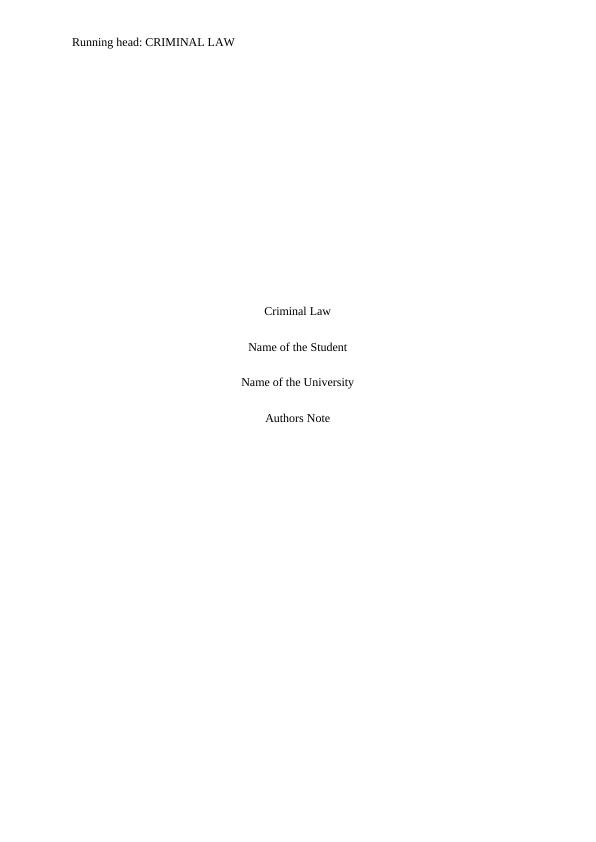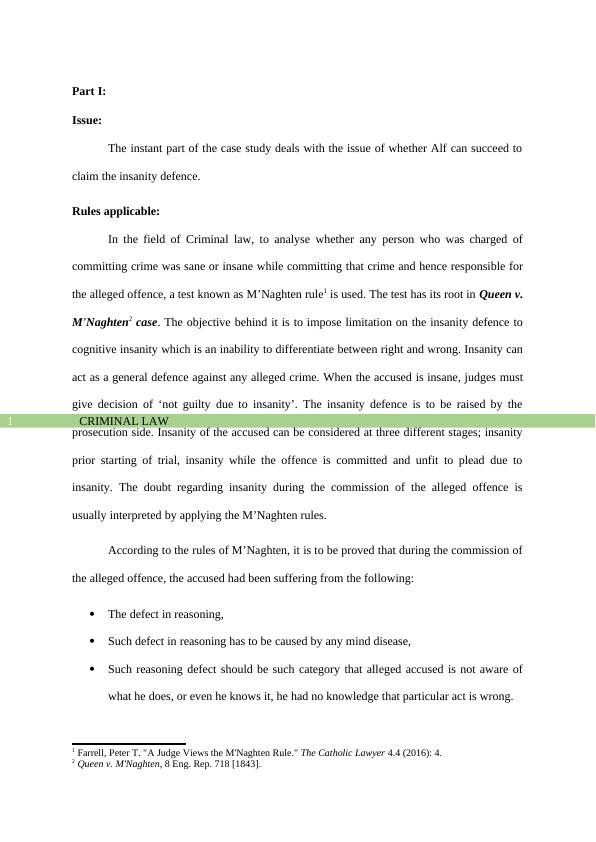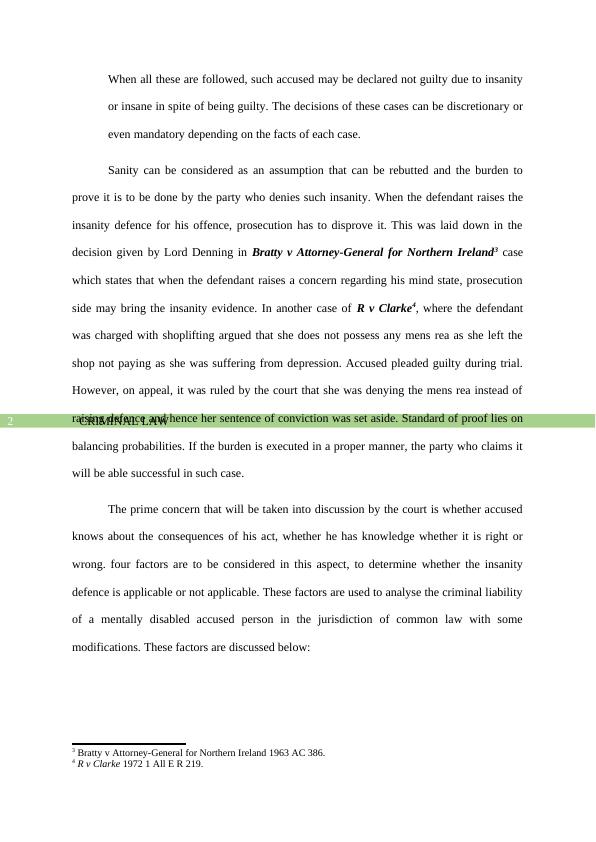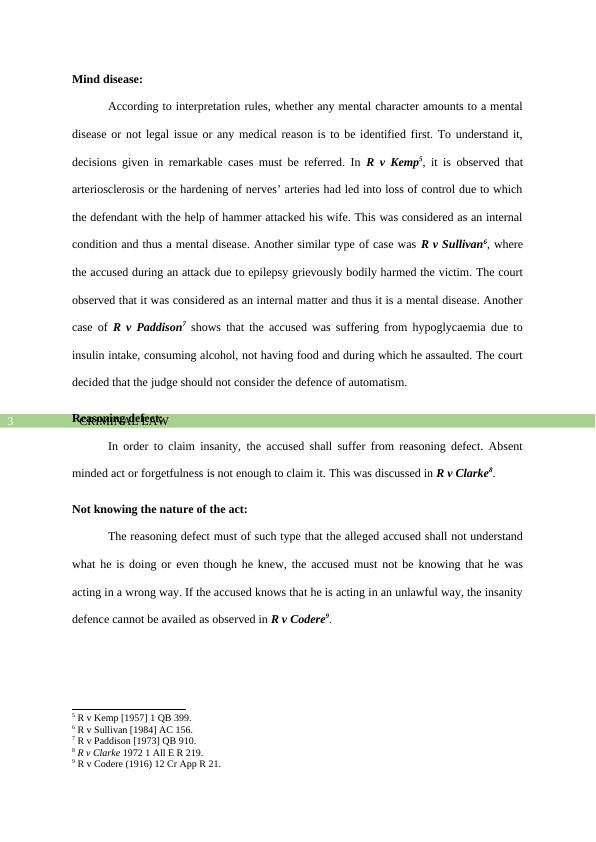Criminal Law: Insanity Defence, Automatism Defence, Murder vs Manslaughter
Prepare answers discussing the defence of insanity and automatism in the case of Alf, charged with manslaughter.
13 Pages3422 Words1 Views
Added on 2022-12-20
About This Document
This article discusses the concepts of insanity defence, automatism defence, and the difference between murder and manslaughter in criminal law. It explores the rules and conditions for claiming these defences and provides an analysis of a case study.
Criminal Law: Insanity Defence, Automatism Defence, Murder vs Manslaughter
Prepare answers discussing the defence of insanity and automatism in the case of Alf, charged with manslaughter.
Added on 2022-12-20
ShareRelated Documents
End of preview
Want to access all the pages? Upload your documents or become a member.
Criminal Law: Defence of Insanity and Automatism
|11
|3083
|302
Defence of Insanity in Criminal Law
|7
|2358
|85
Letter of Advice to Client in Respect of Crime Alleged
|7
|2434
|3
Criminal Law: Insanity Defense and Murder Liability
|7
|2325
|280
CRIMINAL LAW. CRIMINAL LAW Name of the Student: Name of
|12
|3333
|39
LWZ115 Legal Process Assignment
|12
|2514
|295




